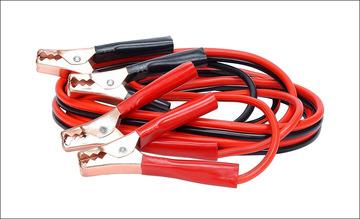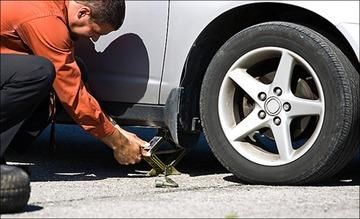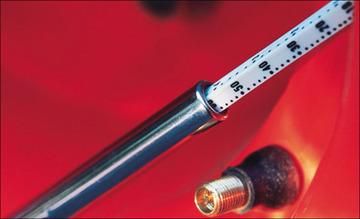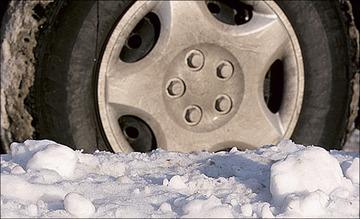If Temporary Driver Licencce Expeired
The owner's transmission of whatever machine volition tell yous—in the most excruciatingly simplistic step-by-pace manner possible—how to operate everything from the seatbelts to the torso lock and how to finely tune the rear headrests with ferocious, compulsive precision. And on most every page in that location will be a xanthous box screaming at you non to do something stupid similar lick the brake discs or serve the radiator water as an after-dinner digestif. After all, based on the advice of their attorneys, manufacturers have to presume that anyone who buys their cars must exist a full moron.
Although the boilerplate owner's transmission overdoes information technology, that doesn't mean we can't all utilise an occasional refresher course in automotive common sense. And, don't take this wrong, but we know there are plenty of y'all out there who won't admit to the simple things you apartment never learned.
So here is our unabashed (merely slightly bashed) guide to the well-nigh uncomplicated challenges of automotive performance. This is the stuff you didn't necessarily learn in drivers' education and your male parent but assumed you learned through transgenerational osmosis.
How to Change a Tire
It used to exist that blowouts were a regular motoring event—right up there with thumping the occasional headlight-mesmerized raccoon and being forced to use a gnarly gas-station restroom. Thankfully, modern tires rarely shed a tread or spontaneously deteriorate. Merely guaranteed in that location will come a time when you'll exist forced to modify a tire.
If a tire blows, don't endeavour to save it or its cycle by stopping immediately in a lousy situation; the shoulder of a busy freeway counts equally a lousy situation. If possible, find a level, solid, well-lit surface and park, fifty-fifty if that means driving a mile at depression speed with your hazard lights on. And for God's sake, don't stop in traffic. Ever. Then brand sure the car can't ringlet. The parking brake should be on, and the manual in park (in an automated) or in gear (in a manual).
Grab the spare, lug wrench, and jack. About newer cars apply scissors-type jacks that raise the motorcar up at a predefined indicate on the auto's structure. All the info on where the tools and jacking points are is in the owner's transmission.
Now, lift the car using the jacking betoken nearest the disabled wheel so that the weight of the car is on the jack but the tire is still in contact with the road. If there's a hubcap, that will demand to be removed so the lug nuts tin be accessed.
With the tire still in contact with the road, the lug nuts should be cracked loose (counterclockwise) simply non removed. The auto can so be jacked upward farther and the lugs removed. With the nuts off, the tire and cycle associates can be removed.
Put the spare on, and hand-tighten the lug nuts (clockwise). The machine can now exist lowered and then the tire is touching the ground, although the car's weight should remain on the jack. The lug basics should then be tightened further using a star blueprint (around the wheel, skipping every other lug) to ensure that they snug down evenly on the wheel.
Lower the car all the style onto the ground. Tighten the lug nuts down as snugly as possible. Striking the road.
Alternatively: Call the auto club.
How to Jump-Start a Car
First, make sure it'due south the battery that's really the problem. If the auto's lights come up on brightly and the starter motor churns with its usual ferocity, the battery is likely heaving out plenty of amps.
2nd, make sure yous have a skillful set of jumper cables—robust, rubber-coated cables that can handle the amperage. Virtually all jumper cables should exist color-coded with the red clamp intended for the positive pole on the battery and the black clamp for the negative.

Ideally, the auto with the bum battery and the leap car should be parked on a clean, dry out surface. And they should be parked so that the cars' batteries are accessible and close plenty to each other that the cables tin can comfortably span the space between them without existence taut.
With both cars off, adhere one of the red clamps to the positive (+) terminal on the battery that's presumed bad. Be careful of the other red clench—information technology's now live. Then connect that other red clench to the positive final on the jump car's battery. Subsequently that, one black clamp goes to the negative (-) terminal on the adept battery while the other black clamp should go to an unpainted steel surface on the stalled car, to be grounded.
Start the car with the good bombardment. Routing the cables this style uses the battery on the live car to start the disabled car, and then there is no need to wait for the dead bombardment to charge. Start the dead car. Remove the cables in reverse order, shut the corresponding hoods, and operate the two cars as usual.
If the electrical system in the car with the drained battery is otherwise okay, the battery should exist recharged after well-nigh 15 minutes of driving and the whole affair should be okey-dokey.
Alternatively: If the car with the dead battery has a transmission manual, in that location'southward e'er bump-starting the car, likewise. With the key turned on, the car in offset gear, and the clutch pushed in, go the car rolling forrad (past pushing it or by rolling down a conveniently located hill), and once up to jogging speed, apace release the clutch. The machine should jerk, then offset.
How to Check Your Tire Pressure
Everything any car does depends on the four prophylactic donuts on which it sits. Making certain those tires are properly inflated is the best manner to guarantee your car performs at its best from a handling and fuel-efficiency standpoint.
At that place are fancy tire gauges and straightforward tire gauges, simply they all work pretty much the same style. But take the gauge to each tire, remove the valve-stem cap (and put it in your pocket and so you don't lose information technology on the footing), press the gauge apartment against the valve stem, and the gauge volition read the pressure level. If you hear air hissing out of the valve alongside the gauge, you don't have a complete seal and volition get an inaccurate reading. What that reading should be is unremarkably listed on a sticker in 1 of the front doorjambs. Or it's in the possessor's transmission. The proper pressure is not the maximum listed on the tire itself; that's frequently far too high.
After that, information technology's a matter of adding air and rechecking the pressure level until the tires are at their correct inflation. But exist conscientious not to overinflate, considering that leaves the motorcar riding on smaller, less stable contact patches.
Remember, it's all-time to measure your tire pressure when the tires are cold—after the car has been parked for the nighttime is ideal. Tires that are warm after running all day will accept a college pressure level from the additional heat. Tire pressures should be checked at least once a month.
Alternatively: When tires shred, steel wheels make beautiful sparks against the pavement.
How to Check Your Oil
The oil in your car's engine is there to lubricate, non fire. And so checking your oil is a way to determine if in that location's enough of the stuff aboard and if the engine has developed an appetite for it.
First, wait in the owner's manual and determine where the oil dipstick is. In nearly cars it's alongside the engine block and marked with a brightly colored handle and an oil-can icon.
Have your car for a spin to warm the oil to normal operating temperature. So park the machine on a level surface and let it sit down with the engine off for at to the lowest degree five or ten minutes. Open the hood, find the dipstick, and pull information technology out by the handle. The long shaft of metal that makes up the bulk of the stick should be covered in engine oil. Wipe that off with a clean rag.

Reinsert the dipstick, and then pull it out once more. At the bottom of the stick will exist markings showing where the normal oil level should be. If at that place's oil on those markings, y'all're good. If it's beneath them, add a one-half a quart of oil at a time until you lot reach the appropriate level. If there's no oil on the stick at all, yous have a trouble.
Don't run your engine on a measly oil supply. Add together the appropriate type of motor oil (that's in the owner's manual, too) as shortly as possible to an engine that's low. Even if information technology'due south but been a few hundred miles since the oil sump was filled, yous could have serious problems.
Alternatively: Throwing a bearing is subversive and dramatic.
How to Get Unstuck
You just collection into muck, and the machine is stuck. What to do?
From snowfall: Information technology's critical to keep a light foot on the gas, considering too much throttle merely spins the tires, heating them up and melting the snow around them, which will refreeze into ice.
First, get out and run into how bad you are stuck. If it is just your bulldoze wheels that are blocked, the process volition be much simpler. But if you tried to plow through a drift and the whole car is angled on a mound of snow, you're going to have to do some digging first to go the auto back on solid ground.
If y'all tin move at all, "rock" the vehicle dorsum and forth by shifting between bulldoze and reverse and going as far as yous can in either management. Be careful not to stride on the gas earlier the gear engages, or you lot could exercise serious damage to the transmission. Sometimes it helps to articulate a lilliputian space around your front tires past cranking the steering wheel back and along. You can get a fiddling extra traction by putting cardboard under the drive wheels, too. If at that place'south no paper-thin around and the situation is desperate, the auto's floor mats might also work. If that fails, proceed shoveling.
From mud or sand: Any you lot do, don't spin the tires. That volition just dig a deeper pigsty. Instead, put something in the intended path of the drive wheels—palm fronds, branches, beach towels, wood blocks, your kid blood brother, anything—and proceed slowly.
Ideally, if you're wandering off-road, y'all should bring a mud ladder or sand ladder with you lot. Mud and sand ladders are basically minor bridges made of steel, rope, or wood that can exist placed before the drive wheels and driven across. Of course, anyone so well prepared as to accept a sand or mud ladder forth is besides more likely to have a buddy with a winch nearby.
Alternatively: Abandon the vehicle in place and buy a new one.
How to Spot Cops
Everyone violates the speed limit sometimes, but there are means to minimize the chances of getting caught.
First, know what the cops drive. Most still use the Ford Crown Victoria, although the Dodge Charger is coming online with many highway patrols and state police agencies, and a few have adopted the Chevy Impala. Larn to identify what a Crown Vic, Charger, or Impala looks like in your rearview mirror, and react accordingly. Note peculiarly the shape and position of the parking lights relative to the headlights; this can be a telltale sign at nighttime.
2nd, keep a running mental inventory of traffic around you. If cars are suddenly slowing for no apparent reason, it might be because there'southward a reason apparent to them.
Third, be enlightened of on-ramps and areas where police tin hide easily. Cops often patrol the same stretch of pavement for days on end. They know all the easy fishing spots, so exist aware of large bushes, overpasses, large signs, and anywhere else information technology would be easy for a police vehicle to hide.
And all this is before because radar. For that, y'all might want to buy a radar detector.
Alternatively: You tin always strictly obey the speed limit. Merely kidding.
This content is created and maintained by a 3rd party, and imported onto this page to assist users provide their email addresses. Y'all may be able to find more information nigh this and like content at piano.io
cervantezmarsureend.blogspot.com
Source: https://www.caranddriver.com/features/a15145141/drivers-education-the-6-things-every-driver-should-know-how-to-do/




0 Response to "If Temporary Driver Licencce Expeired"
Enregistrer un commentaire